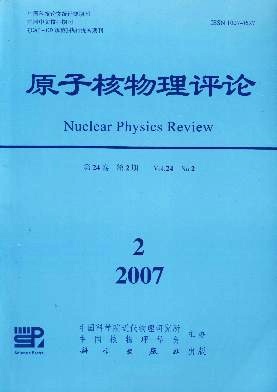Initiatory Pathologic Observation of Protonirradiated Mice’s Organs
doi: 10.11804/NuclPhysRev.24.02.108
- Received Date: 1900-01-01
- Rev Recd Date: 1900-01-01
- Publish Date: 2007-06-20
-
Key words:
- proton irradiation /
- tandem accelerator /
- mouse
Abstract: Space radiation come from galactic cosmic rays and solar particle events which contain considerable protons is an invisible killer to astronauts. Furthermore, many wounded persons were injured by proton and other heavy ion radiation in a nuclear warhead or nuclear terrorism attack. However, the damage effect of proton radiation is known little in our country. In this study, the proton induced histopathologic changes of mice were observed primarily. naesthetic mice were irradiated with the 19 MeV protons dili vered by HI13 tandem accelerator at CIAE in different doses(2, 4, 8, 16 Gy). In order to observe the da mage effect, mice were killed by anaesthetic at different time point after radiation, and the tissue sections were analyzed by a histopathologic method. The results show that all of the mice’s backs began displaying ringed depilation at postirradiation day 7. Many epidermal cells necrosis and exfoliation happened, and subcutaneous dropsy was observed. There were some focal necrosis or even followed with bleeding in heart and liver. Hepatocyte evidently regenerated. A hyperaemia was seen in lung tissue and alveolar septum was obviously thickening. Acinus renis represented notable pyknosis, necrosis and disappearance. Especially, these pathologic alteration clearly displayed in high dose groups. In conclusion, protonradiation can induce different grade injury to skin, heart, liver, lung, kidney and other organs. Further studies should be made to deeply understand the mechanism about the proton radiation damage.
| Citation: | HUANG Hai-xiao, SONG Liang-wen, XIONG Guo-lin, SUI Li, XU Bing-xin, XIE Lin, XING Shuang, LI Ming, KONG Fu-quan, WANG Xiao, ZHAO Kui, YUE Mao-xing, LUO Qing-liang, #. Initiatory Pathologic Observation of Protonirradiated Mice’s Organs[J]. Nuclear Physics Review, 2007, 24(2): 108-111. doi: 10.11804/NuclPhysRev.24.02.108 |






 甘公网安备 62010202000723号
甘公网安备 62010202000723号 DownLoad:
DownLoad: